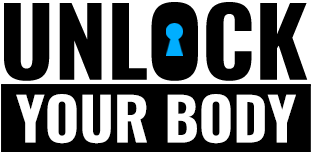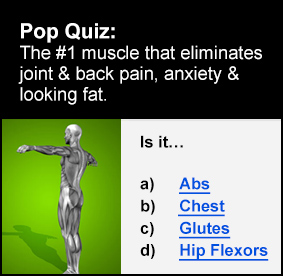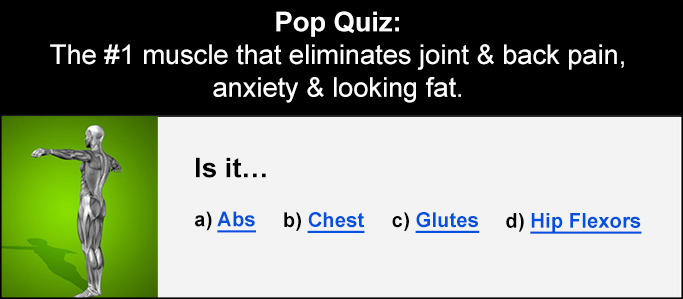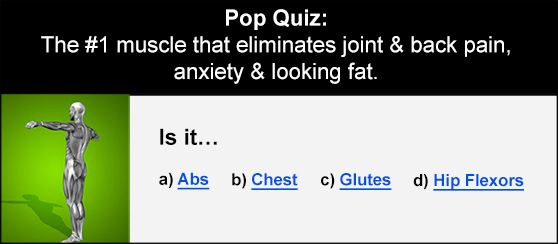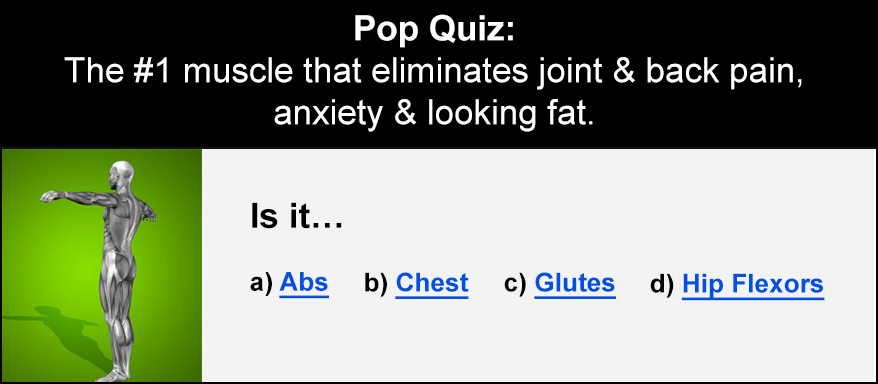3D Core Training And Spine Health
The core is a 3D muscle group. It keeps your spine healthy in every direction. Rock hard abs are cool, but spinal health is about far more than banging out the crunches. With 80% of people dealing with debilitating back/spine pain, ignoring proper injury prevention is a very poor gamble!
Today we’re discussing how to train your core through lateral and rotating exercises, and why it’s absolutely crucial to strength, health, and performance. Whatever your goal, you’re going to want to stick with us to keep yourself in one high performance piece!
Intro To Your Spine
Your spine is best described as a series of ring doughnuts stacked on top of each other with jelly doughnuts between them. This is Dan John’s analysis and it’s pretty important, “You’re only as good as the integrity of your spine because without it, you can’t move well or maybe at all.”
The spine isn’t a strong structure by itself. It locks bone-on-bone but that’s not sustainable. Instead, it’s sustained by the muscles of the back and core. This is why we’re here today; because your spine is weak and vulnerable and all you can do about it is build muscle to hold it in place.
Think of it like a suspension bridge. It’s vulnerable and depends entirely on the supporting structure, since the internal structure isn’t powerful.
The spine has a few simple, crucial movement functions. It can bend and extend in each direction – forward, backward, and sideways – as well as rotating through the vertebrae. These are equally important because you are going to be doing all of these during a normal day.
3D Demands – What Your Spine Needs
The demands of the spine are a mixture of mobility and stability. In fact, the two are pretty much the same. Your life works best when you can move your spine freely without sustaining damage, so you need good flexibility and control.
Equally, you need to ensure that any movement you can perform is both stable and controlled. It’s a simple task in principle, but it’s hard to train all of these movements and retain active control. This also doesn’t mean normal strength in the deadlift, for example, but in very fine control.
You might be a big strong guy or gal with a monster squat, but that doesn’t mean your spine and core are working well. It just means they’re good at holding still, or your poor control just hasn’t caught up to you yet. Midline/trunk work is essential even if it isn’t showing up as a weak link yet.
On top of this, you don’t have much nervous connection to your intervertebral discs. These ‘jelly doughnuts’ are the place where you’re more likely to sustain a back injury and you don’t feel them fatiguing or enduring stress like you do in the muscles or even joints.
Training the core is crucial to keeping these healthy. Their main enemy is compression; too much compressive force in the discs is how they bulge, rupture, or herniate. We’re not trying to scare you. These can be avoided and proper core strengthening is the answer.
Again, internal pressure from the core muscles helps keep these discs squeezed into place so they don’t expand outwards too much under compressive force. This is a circumferential pressure; it doesn’t come from just the abs. 3D stability comes from muscles on each side of the core.
To round-up, the needs profile of the spine are a pretty simple list:
- Mobility and stability in each direction
- Mobility and stability in rotation
- Proper pressurisation to prevent disc compression or bone-on-bone friction
And these are the key reasons we’re going to be talking about core training in rotation and lateral movement! You need big slabs of muscle in the core and back, of course, but also from the sides and during trunk rotation to prevent debilitating back pain or injury.
3D Training
So, how do you address these kinds of strength deficiencies? Well, the first place to start is figuring out where you’re at right now and what you’re aiming for. This is how we structure training and prioritise the weakest links.
For most people, lateral movement is very weak, while rotational movement is severely restricted by mobility and weakness. So, the key is usually getting in some higher-rep training with lighter exercises and building mobility slowly and patiently.
Lateral
The sideways movements of the core are underrated. Side bends are a single option but the overall development of the obliques is key for spinal health and symmetry. If you’re an athlete, you need these, and if you’re not, you still need obliques for a healthy spine and core.
Your trunk isn’t complete without strong obliques, so this section is important!
Hold The Line
Start training the lateral movements with bodyweight exercises. For many people, the side planks is the place to start. This is a simple hold exercise that will challenge you but forcing you to keep the hips, feet, and head in a straight line.
You should start on your elbow and progress to an out-stretched arm against the floor. From here, you can add ‘dips’ where you lower the hips to the floor and then return to the plank position to move the oblique through the whole range of motion.
Hanging Oblique Training
A great progression for the obliques should come through adding hanging bodyweight work.
The hanging oblique crunch is a great exercises for training the muscle group and improving spine health. It combines mild decompression with oblique strength for overall improvement and balance.
On top of this, you can add variations like the ‘around the world’ for more challenge and increased control. These obviously add a fair amount of difficulty and they bridge the gap between simple side planks and more advanced weight training for the obliques.
Get your rep work in and be sure to focus on slow, controlled movements. These keep you safe while also building control faster, which is exactly what we’re looing for with this type of movement. From here, you should be looking to load yourself with weight and start training the obliques directly.
Bending Your Way to Stability
When it comes to weight training for the obliques, we like side bends with one dumbbell. Focus on light weights and keeping the hips in the same place throughout the movement.
Side bends with an empty barbell on your back are another great way to build core strength. They can be pretty difficult but once you’ve built up basic core strength they’re an easy exercise to understand and perform, and will challenge you. You can add weight eventually, but good luck with that.
Rotational Strength in the Core
Rotational exercise can be very difficult and if you’ve never done it, or you’re coming to exercise with some age or activity related restrictions, it’s going to take time. You need to start with the basics and really work up your tolerance for training, or you could risk injury.
Take it Easy
The key is to begin with a combination of mobility and strengthening at the same time. For example, stretches like the kneeling spine rotation and scorpion stretch can begin to open up rotation in the spine. Equally, opposite toe touches or rotating floor touches are a great choice.
Pair these with simple rotational exercise, such as core rotations on an exercise ball. These don’t take much strength and they don’t load the spine very much so you can practice them early on to build safe, sustainable strength in rotating patterns.
From here, light basic movements are the way to go. Things like light, slow cable wood chops are a great place to start. The slow movement helps to develop control the whole way and helps you feel the muscles of the core working.
Stable Rotations – King of Core
As you advance with these exercises, adding total reps or weight, your exercise choices needs to get more advanced, too.
One of the best exercises you can do builds on the side plank we mentioned above. the side plank with a twist is perhaps the most underused exercise for overall core strength and spine health. DO IT! Slow, controlled, and with a focus on quality is always the best choice.
Hanging rotating tucks (knee to opposite elbow) are also great, and combine well with the oblique crunches we mentioned above. You can also add lying leg raises with rotation for a combination of mobility and strength.
These are a bit more difficult and can build a strong and healthy core alone. At this point, you’re probably ready for something more advanced if you choose. The paused Russian twist and Swiss ball dumbbell rotation are both great choices.
Getting Serious with Rotation
Finally, and only once you’ve developed strength and control in the core, you can add in dynamic movement.
These obviously carry more risk for those who are unexperienced, but they develop strength and reactive control that you need for sports and life. They are a great way of exposing yourself to effective stress to prepare the body for the real world.
The med ball side toss is absolutely brilliant, and thunder ball swings are a stunning choice for better core strength. These aren’t for the faint-hearted or the weak-cored, however, so really take your time getting to this level!

